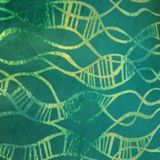
I think you are absolutely right on the LNSS! It looked velvety, and reminded me of seborrheic keratosis. Linear Nevus Sebaceous Syndrome 👌🏻👍🏻
For some reason, the first thing I thought of was Treeman Syndrome, even as the eruptions are not horn-like and more like NF.
Thought it looked like yaws but probably more of a neurofibromatosis
Schimmelpenning syndrome is a rare multisystem disorder characterized by sebaceous nevus associated with other abnormalities outside the skin which most commonly affect the brain, eyes and bones. The skin lesions associated with this disorder are called nevus sebaceus(also referred to as sebaceous nevi) because they consist of an increased number ofmalformed sebaceous glands (small oil-producing glands in the skin) along with an overgrowth (hyperplasia) of the epidermis. Nevus sebaceous is the most common type of organoid epidermal nevus (which broadly encompasses abnormally formed adnexal skin elements such as hair follicles and glands within the skin). Epidermal nevi are usually present at birth (congenital), although they might not be identified until later during childhood or after puberty. Affected individuals may also have abnormalities affecting the brain such as seizures or intellectual impairment, the eyes such as clouding (opacity) of the cornea or partial absence of tissue of the iris or retina (coloboma), and the skeleton such as spinal malformations, craniofacial defects, and deformities of the arms and legs. Schimmelpenning syndrome occurs randomly for no apparent reason (sporadically) during the formation and development of the embryo (embryogenesis), most likely due to a mutation of a gene that occurs after fertilization (postzygotic mutation) and is present in only some of the cells of the body (mosaic pattern).
I have never seen, nor heard of this condition. What is the life expectancy?






